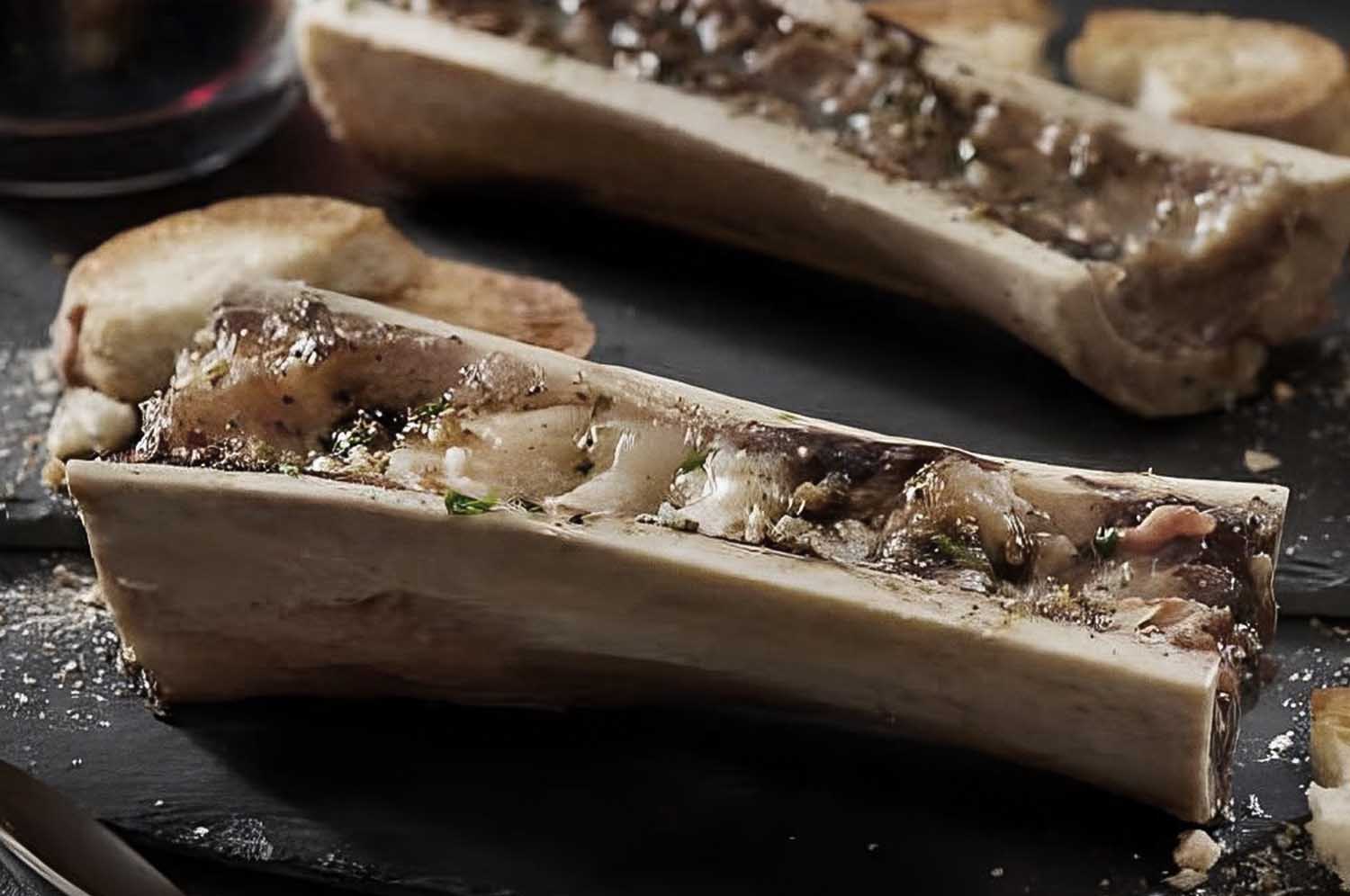While cooking or enjoying your favorite meaty dish, you may have noticed a brownish-colored substance in the center of the bones. So, what does it mean?
Key Takeaways:
The brown stuff you see inside bones is known as bone marrow, an edible component just like cooked meat. Bone marrow is beneficial for health because it contains more nutrition than the meat itself, but you should eat it in moderation because of its high-fat content.
Keep reading to explore more about the brown stuff inside bones, its taste, nutrition, and more.
Is It Safe to Eat The Marrow Inside Bones?
As per USDA (US Department of Agriculture), if you cook the meat properly at a safe temperature level, it is also fine to consume the bone marrow of that type of meat.
Whether you are cooking pork, lamb, or beef, the recommended internal temperature is at least 62.8°C when checked with a dedicated food thermometer prior to moving the meat away from the heat.
Traditional preparation of bone marrow involves serving the bone intact, then cutting it in half and eating the marrow within.
Bone marrow is a trendy appetizer at many restaurants these days, although humans have consumed it for thousands of years.
Ancient people cracked open the bones of animals they hunted for their marrow. Bone marrow is an excellent source of collagen, other proteins, and healthy saturated fats.
In addition to being delicious on its own, it also makes a great spread for toast or a tasty addition to tacos. Nutritional bone broth may be made by simmering the marrow bones with vegetables.
What Does Bone Marrow Taste Like?
Marrow is the fatty, sponge-like substance that fills the hollows of most bones. Bone marrow, when fresh, has the same appearance as the rest of the bone and may be off-white, yellow, or even red.
When heated, though, it turns from off-white to somewhat brown, and the texture softens as well, nearly like butter but with a sweeter, nuttier taste and a lighter consistency.
The feel is like melting butter on your tongue; it’s soft and elastic, almost like gelatin. The meat is so incredibly tender that you can eat it straight off the bone with a spoon, but there are many more ways to prepare and enjoy it.
The significant fat content of bone marrow gives it a somewhat unique odor compared to the rest of the bone.
Due to the high-fat level, bone marrow has a rich umami flavor and a velvety texture, much like butter or cream. When done well, the taste is rich, savory, and a little bit sweet.
Don’t worry if you haven’t tried bone marrow before. There are pretty high chances that you’ll enjoy it and be amazed by its taste.
What Is The Nutritional Value Of Bone Marrow?
Spinal columns, hips, and thighs are rich sites for bone marrow. Red blood cells, white blood cells, and platelets are all generated from stem cells in this spongy tissue, which plays an important role in the body’s ability to carry oxygen, fight infection, and clot blood.
Bone marrow from domesticated mammals, including cows, goats, sheep, etc., is a popular ingredient in various culinary applications.
Collagen, protein, and essential nutrients like iron, Vitamin A, Vitamin E, Vitamin B12, and Riboflavin are present in this one-of-a-kind substance.
Here’s an example of the nutritional content in 1 tbsp of raw caribou bone marrow to give you an idea (RDI in the following chart stands for Reference Daily Intake):
| Nutrition | Content |
| Total Fat | 12 g |
| Calories | 110 |
| Protein | 1 g |
| Vitamin A | 1% of RDI |
| Vitamin B12 | 7% of RDI |
| Phosphorous | 1% of RDI |
| Thiamine | 1% of RDI |
| Vitamin E | 2% of RDI |
| Iron | 4% of RDI |
| Riboflavin | 6% of RDI |
Source: Healthline
Types Of Bone Marrow
Bone marrow is available in two colors.
- Red – Includes stem cells used by the animal’s body to make blood cells.
- Yellow – Helps produce fat, cartilage, and bones).
Most restaurants serve yellow marrow, which comes from cows.
Here’s a chart that shows how bone marrow is consumed worldwide in a variety of forms and dishes:
| Country | Bone Marrow Eating Style |
| Native Alaska | They eat the bone marrow of moose and caribou. |
| Vietnam | The bone marrow of beef is popularly used as a soup base. |
| Indonesia | The bone marrow is consumed in the form of sumsum, mainly cooked as a soup or curry dish. |
| Iran | The shanks of lambs are broken prior to cooking so that later on, the foodies can suck in the bone marrow from it. |
| Nepal | The bone marrow is stuffed in a leaf stripe bag. |
| China | The tibia (shank bone) of pigs is used in preparing a cooked soup. |
| Hungary | The tibia is used to prepare beef soup, where the bone is chopped into pieces. |
| India | Bone marrow is one of the main components of a nalli nihari dish. |
Bone Marrow Vs. Meat
A study was done to analyze a reindeer’s nutrient content in the meat, bone marrow, liver, and tallow. And in the outcome of that study, it was observed that in most cases, bone marrow (along with tallow and liver) has more nutritional content than meat.
Bone marrow is rich in a number of nutrients, including fat-soluble vitamins and minerals, but it also contains a lot of fat. As a result, bone marrow may contribute to weight gain (because of the high-fat content), so if you decide to include it in your diet, do it sparingly.
To give you a rough idea, a 100-gram bone marrow dish has 84 grams of fat. This is because fat makes up almost all of bone marrow’s caloric content.
Animal fats are high in saturated fat and should be consumed in moderation. Saturated fats raise cholesterol levels in the blood, raising the risk of cardiovascular disease.
So the bottom line, although bone marrow has many nutritional benefits, you should consume it in moderation because it is so rich in fat.
Avoid the traditional pairing of bone marrow with toast and instead, go for a higher protein choice by pairing your bone marrow with chicken or lean beef.
Bone marrow may also enhance the taste of other plant-based proteins, such as beans or rice. However, due to the significant amount of fat in the marrow, it is best served with low-fat items.
Recommended Hand-Picked Content For You:








